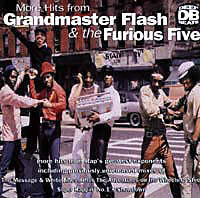Hip-Hop's Radical Roots, Part 1


by Jace Clayton |
This article was posted on February 25, 1999.
 |
1978, New York City. Dead summer. The city was always public but an inescapable heat sends folks out of their apartments and amplifies the streets' activity. The buzz surrounding hip-hop has already escaped —via mixed tapes aired on boomboxes— to Manhattan's attention. But it is here in its birthplace, the South Bronx, where Afrika Bambaataa and his crew of diasporic black youth known as the Zulu Nation have gathered to celebrate the new sensation.
Bambaataa switches from Olatunji's drumming to the Monkees to James Brown in the course of a few songs, ending up on Kraftwerk's electronic epic "Trans-Europe Express". How exactly, did futurist music from Düsseldorf, Germany find its way alongside African drumming, American soul, and British rock into an open-air party held in the economically ravaged Bronx? Hip-hop's logic is complex, irreverent, all its own.
From its inception, hip-hop was plural, defined by an approach to sound and music-making rather than a single stylistic designation. Jazz, soul, funk, rock 'n roll, Nigerian drumming — everything was in the mix. Parties were a cross-cultural barrage of styles chosen and mixed by the disc jockey (DJ). Jamaican-born Bronx resident Kool Herc provided the innovations that elevated DJing to an art form. In 1973 Herc noticed dancers' enthusiasm for the funky drum "break" (percussive solo) portion of a song. He obtained two copies and started doubling these "breakbeats," playing the solo from one record immediately after the other one ended. The angular, acrobatic form known as "breakdancing" evolved in direct response to Herc's extended drum solos. B-boys and b-girls were devotees of the drum break, physical interpreters of the rhythmic challenge brought on by lengthened breakbeats.







